Article
Pharmacy Fact: Don’t Get Burned by These Six Common Houseplants
Author(s):
Several common houseplants present in homes year-round due to their low maintenance requirements and environmental adaptability are far more toxic than many may realize.
In 1919, a young child woke up on Christmas morning to sneak downstairs and see what was in store. To not wake his sleeping parents, he crawled across the living room to the tree, not making a sound.1
As he wiggled his body with elegant stealth, or so he believed, he found a vibrant, red leaf-like petal on the ground beside him. Although slightly wilted, the color reminded him of one of his favorite cherry-flavored candies, so he stuck it quickly in his mouth and then continued on his way, inching toward his presents under the tree.
Several hours later, his parents woke up to find their child dead on the floor.1
This story, long thought to be the source of fears surrounding the deadly nature of the poinsettia plant that commonly decorates homes around Christmas time, isn’t actually true. However, the unfounded myth of the young child dying from ingesting a poinsettia in 1919 has scared parents from keeping these plants within reach of their children for more than a century.1
Upon ingestion, poinsettia can cause mild discomfort, including an itchy rash; eye irritation; a mild stomachache, vomiting, or a mild case of diarrhea; or an allergic reaction among individuals who have a latex sensitivity, which is a compound contained in the plant.1 But for the general population, poinsettia is not much of a concern. A 50-pound child would need to consume more than 500 poinsettia bracts, which are the leaves of the poinsettia that change color, before crossing a toxic threshold.3
Although many of the plants used to deck the halls around Christmas, such as the poinsettia, have been feared to be deadly poisonous, these fears have been significantly exaggerated. However, there are several common houseplants present in homes year-round with a far more toxic profile than these beguiling leafy holiday villains.
1. Peace Lily

With dark green leaves and simple white flowers, the peace lily is one of the most common houseplants due to its durability, tolerance for underwatering, and low to medium light requirements. However, in 2005, more individuals called poison control centers about possible poisonings following the ingestion of peace lilies than any other plant.1
Containing calcium oxalates, the peace lily, if ingested by adults, can bring on skin irritation, burning of the mouth, difficulty swallowing, and nausea. However, in small children, dogs, and cats, peace lily ingestion can be far more problematic.1
In children, ingestion of peace lily leaves can cause diarrhea and vomiting, but the sap can cause children to experience symptoms such as a puffy mouth, a burning sensation in the throat, and a loss of appetite, as well as nausea, headache, lethargy, and constant salivation. When consumed in excess, respiratory problems and kidney failure can also occur.4
In dogs and cats, symptoms of peace lily ingestion can include oral irritation, excessive drooling, vomiting, difficulty swallowing, and intense burning and irritation of the mouth, tongue, and lips. However, symptoms tend not to be too severe or require a visit to the vet.4
2. English Ivy
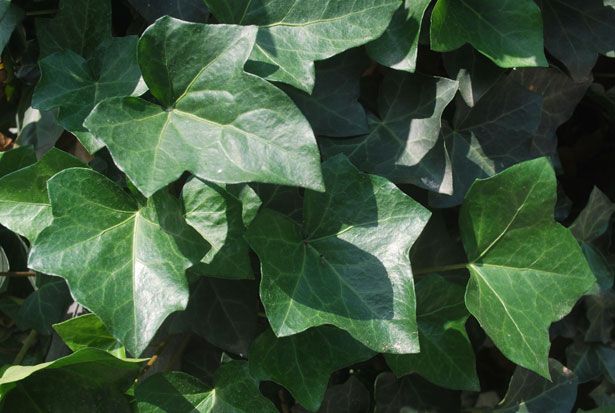
This vine hailing from Europe is commonly used as ground cover outdoors, but it is a common indoor potted plant. When grown inside the home, the berries of the English ivy can pose problems to those less acquainted with its poisonous nature; although bitter and not at all tasty, the berries may still invoke the curiosity of children or pets.
If ingested, these berries can lead to severe gastrointestinal problems and potential delirium or respiratory issues. Additionally, the sap from the leaves of the English ivy can lead to skin irritation and blisters.5
Although not fatal, ingestion of the leaves can cause more severe symptoms in dogs and cats than in humans. Some symptoms that can occur following the ingestion of the leaves include abdominal pain, diarrhea, loss of appetite, nausea, and vomiting.6
Additionally, if dogs and cats have repeated exposure to the sap of the plant, it can cause a temporary allergic dermatitis, with symptoms including blistering, redness, and swelling.6
3. Philodendron
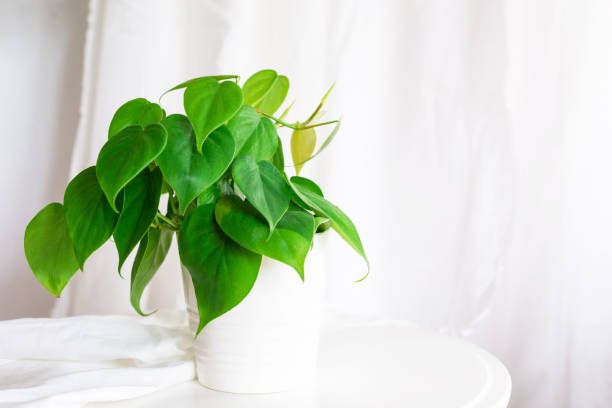
Ivylike in its appearance and growth patterns, the philodendron is native to the West Indies. Similar to the peace lily, all parts of the philodendron contain calcium oxalates. Because the leaves often trail down to the floor, they may be in quick reach of small children and pets, for whom this plant is far more toxic than it is to adults.1
When struck with the urge to investigate, pets and children may only nibble upon a philodendron leaf, in which case they will commonly only experience mild burning in the mouth and/or nausea. However, ingestion of any part of the plant can cause small children, dogs, and cats severe abdominal pain, and any repeated skin contact can lead to severe allergic reactions.1
In 2006 alone, poison control centers across the United States received more than 1600 calls relating to poisonings from the ingestion of the philodendron plant.1
4. Dumbcane
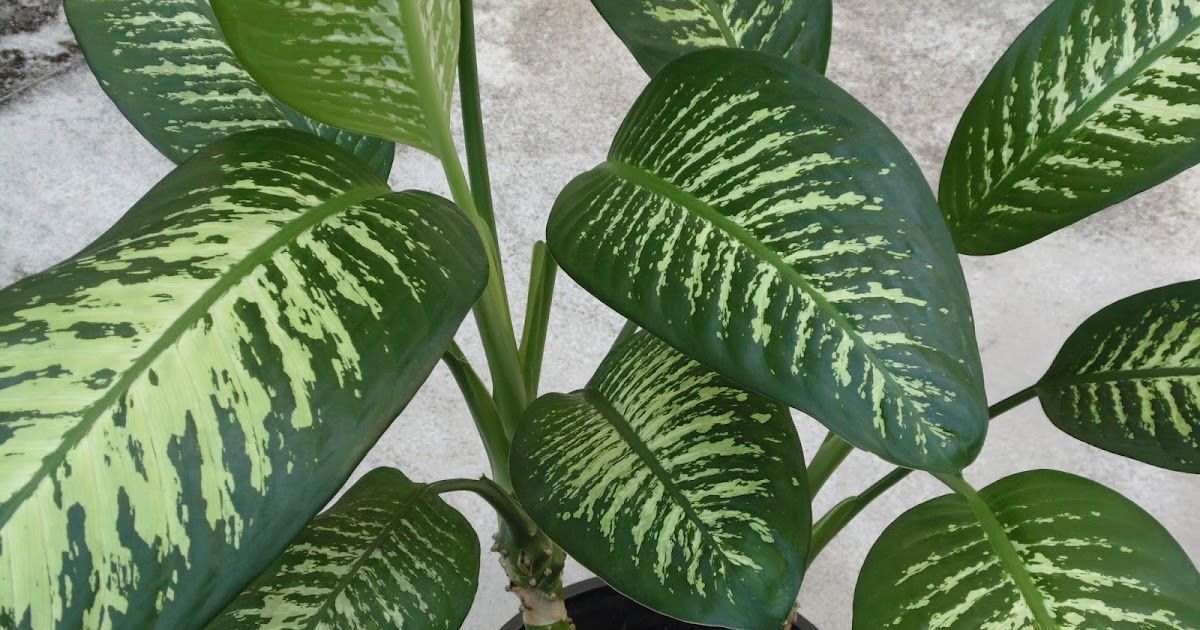
This plant, unlike others gracing this list, is referred to as the dumbcane due to historical knowledge of the effects of its ingestion. A tropical plant from South America, the dumbcane, also known as dieffenbachia, has thick, broad leaves that are usually a combination of green, white, and yellow.1
If consumed, dumbcane can cause temporary inflammation of the vocal cords, leading people who have ingested it to not be able to speak. Most symptoms of poisonings from dumbcane include severe irritation of the mouth and throat, swelling of the tongue and face, and stomach problems. Additionally, the sap from the dumbcane is irritating to the skin and can cause light sensitivity and pain if it gets in the eyes.1
Although not life threatening to small children, dogs, and cats, if they ingest dumbcane, it can lead to oral irritation, excessive drooling, vomiting, difficulty swallowing, and intense burning and irritation of the mouth, tongue, and lips.7
Rubber Tree
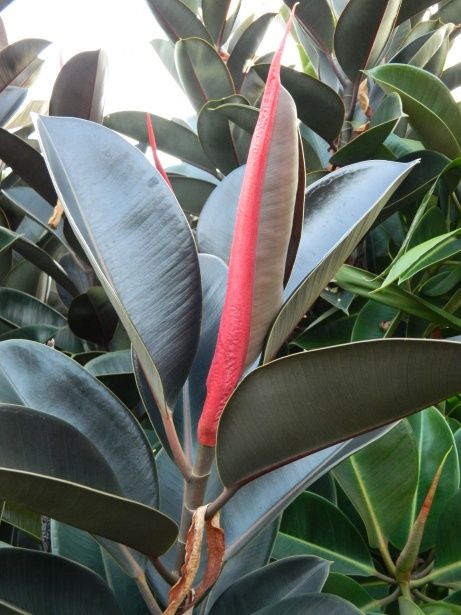
The rubber tree is a very popular houseplant due to its ease of care. A species of the mulberry family, the rubber tree, or ficus elastica, has thick, waxy leaves that first emerge as a soft coral in color, but eventually deepen to a dark green as they age.8
Native to southern China, Southeast Asia, and Indonesia, the rubber tree is an evergreen species that was originally used to make rubber from its latex-containing sap before the advent of synthetics. The latex in the sap is the same compound used to make products such as latex gloves, condoms, and many medical supplies. However, latex is a common irritant for many people and the sap of the rubber tree is no different.9
For individuals with sensitivity to latex, adverse reactions can range from mild to severe. In its mild form, the most common symptom of sensitivity to latex is skin dermatitis, which can present as a mild rash at the site of contact. In its severe form, latex can cause reactions ranging from blistering and burning to anaphylactic shock.9
For small children, if they ingest the plant, and specifically its sap, they may experience burning, itchiness, and pain in the mouth and throat, with severe cases including gastrointestinal distress, diarrhea, and vomiting.9
For dogs and cats, their fur will likely prevent most problematic exposure to the sap, but problems can occur if the sap gets in contact with their nose or eyes, with common symptoms including irritations at the site of contact. If cats or dogs ingest the sap, it can lead to diarrhea or vomiting.9
Ficus Tree
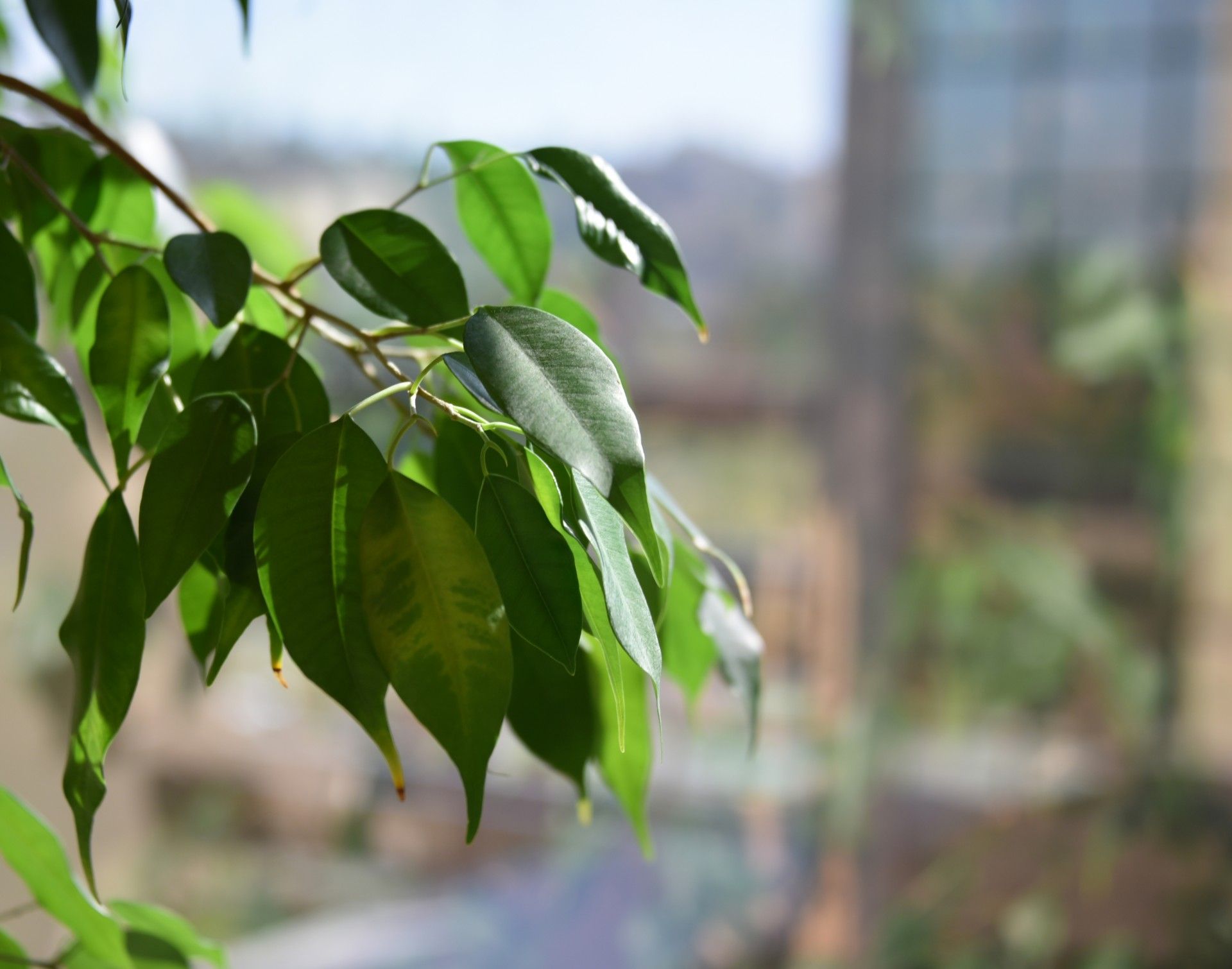
The ficus benjamina, commonly known as just the ficus tree or the weeping fig, is a species of fig that has glossy green ovoid leaves that taper to a point. This tear-like shape is what lends itself to its melancholic namesake, yet its stature remains strong and forever tree-like in form, regardless of its size and age.10
Due to its affordability and adaptability to soil, light, and weather conditions, the ficus tree is a common houseplant that has minimal care needs. However, similar to the rubber tree, the ficus benjamina has toxic sap that can cause skin dermatitis. Specifically for the ficus tree, however, symptoms resulting from the skin’s exposure to the sap can be intensified with immediate exposure to the sun, resulting in more severe skin irritation at the site of contact.11
For dogs and cats, contact with the sap of the ficus tree can lead to reactions such as decreased appetite, drooling, vomiting, diarrhea, and skin irritation. However, reactions tend to be mild and pass relatively quickly after exposure.11
REFERENCES
- Stewart A. Wicked Plants. New York, NY: Algonquin Books of Chapel Hill; 2009.
- Hoecker JL. Are poinsettia plants poisonous? Mayo Clinic. October 8, 2019. Accessed January 21, 2022. https://www.mayoclinic.org/healthy-lifestyle/infant-and-toddler-health/expert-answers/poinsettia-plants/faq-20058304
- Yang A. The Dark Myth of the Poinsettia. Nature Education. January 1, 2015. Accessed January 21, 2022. https://www.nature.com/scitable/blog/plantchemcast/the_dark_myth_of_the/
- Are Peace Lilies Poisonous? You’ll Be Shocked to Know. Gardenerdy. Accessed January 21, 2022. https://gardenerdy.com/is-peace-lily-poisonous/
- English Ivy Poisoning in Dogs. Wag! Accessed January 21, 2022. https://wagwalking.com/condition/english-ivy-poisoning
- Boone L. Dogs, cats or kids? These are the right plants for you. Los Angeles Times. February 28, 2020. Accessed January 21, 2022.https://www.latimes.com/lifestyle/story/2020-02-28/plants-safe-for-pets-and-kids
- The Sill staff. Rubber Tree. The Sill. Accessed January 21, 2022.https://www.thesill.com/blogs/plants-101/how-to-care-for-rubber-tree-ficus-elastica
- Worth D. How Toxic are Rubber Tree Plants? Are They Safe for Your Home? The Healthy Houseplant. Accessed January 21, 2022. https://thehealthyhouseplant.com/how-toxic-are-rubber-tree-plants-are-they-safe-for-your-home/
- Prontes I. Toxicity of Ficus Benjamina. Garden Guides. September 21, 2017. Accessed January 21, 2022. https://www.gardenguides.com/120569-toxicity-ficus-benjamina.html
- Toxic Ficus Banjamina Sap. TipsPlants.com. Accessed January 21, 2022.https://tipsplants.com/community/plant-care/toxic-ficus-benjamina-sap
- Weeping Fig. Pet Poison Hotline. Accessed January 21, 2022. https://www.petpoisonhelpline.com/poison/weeping-fig/






